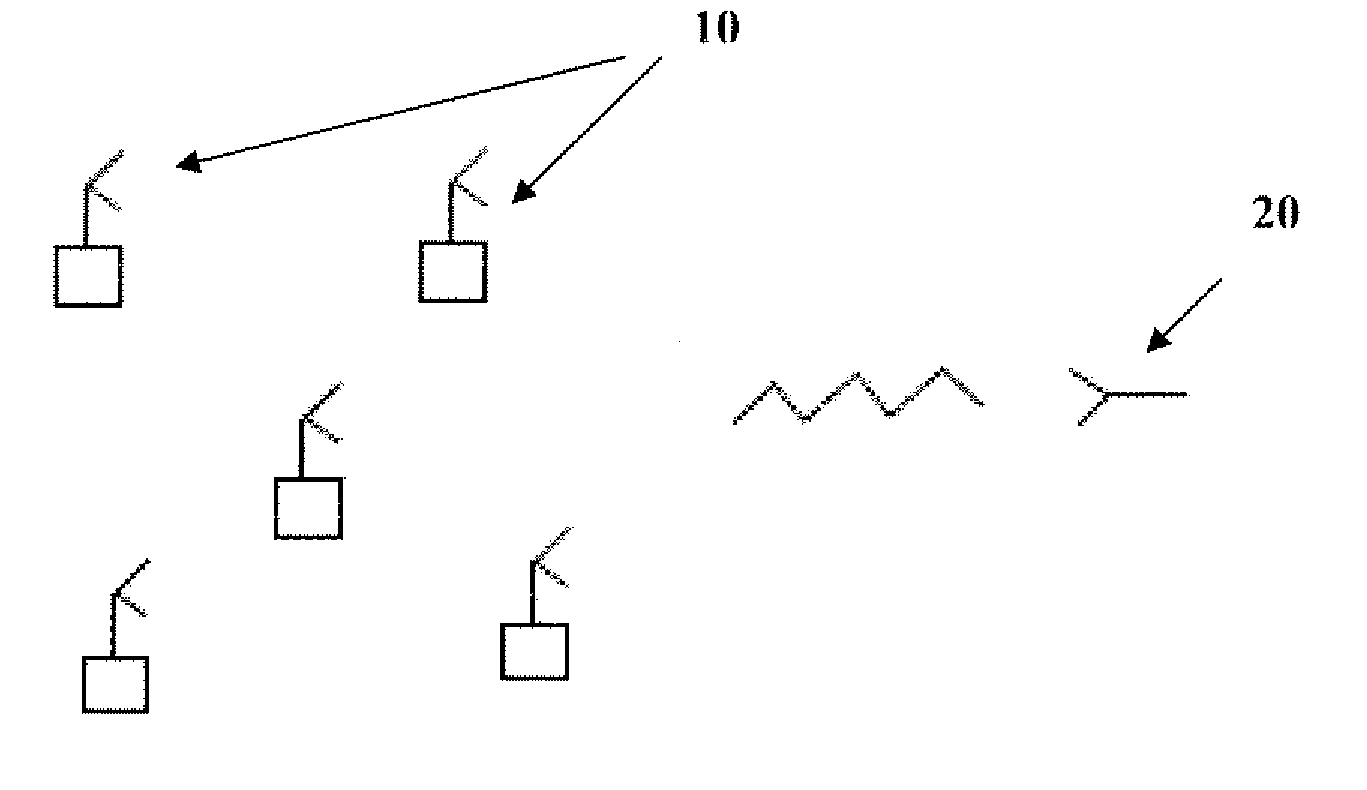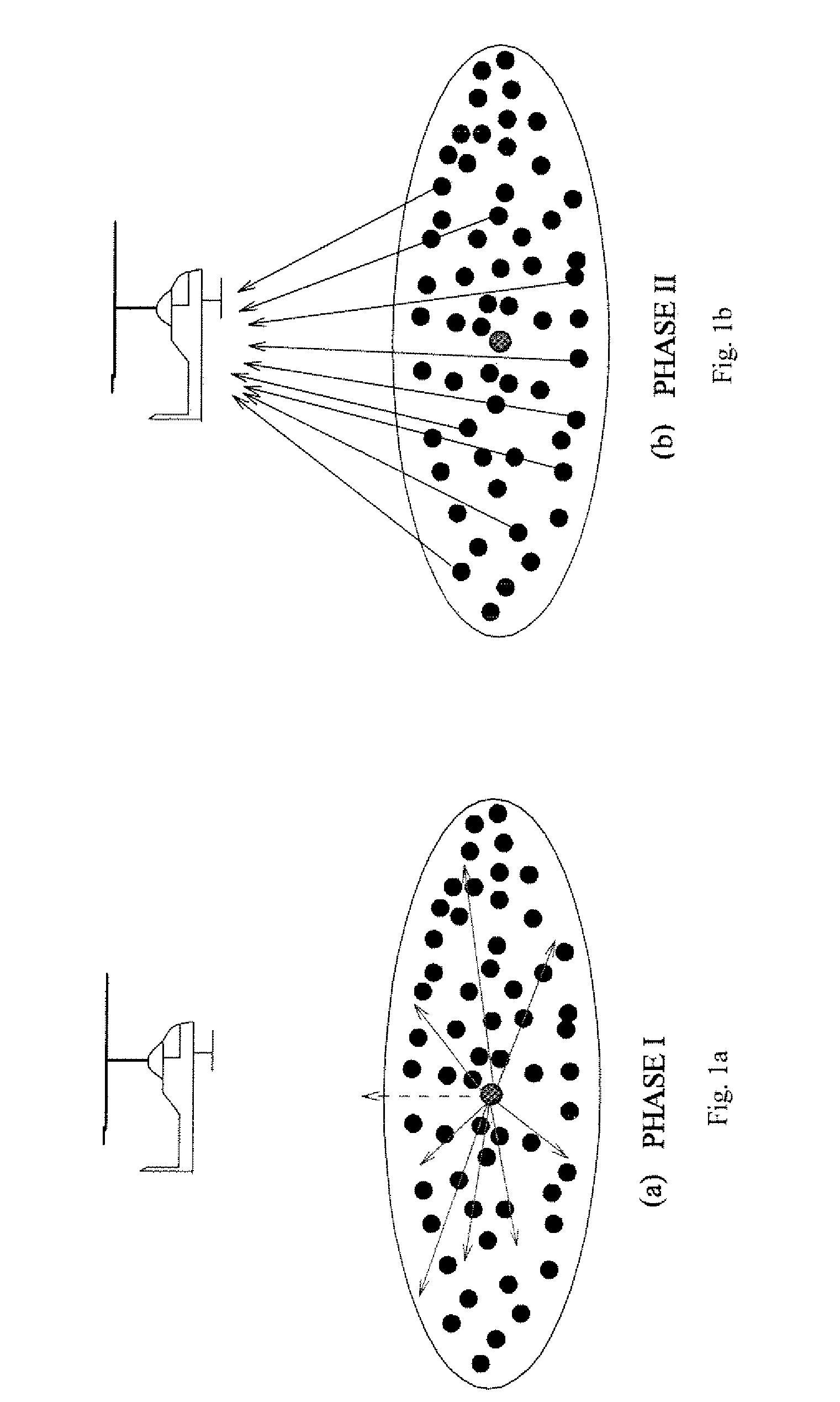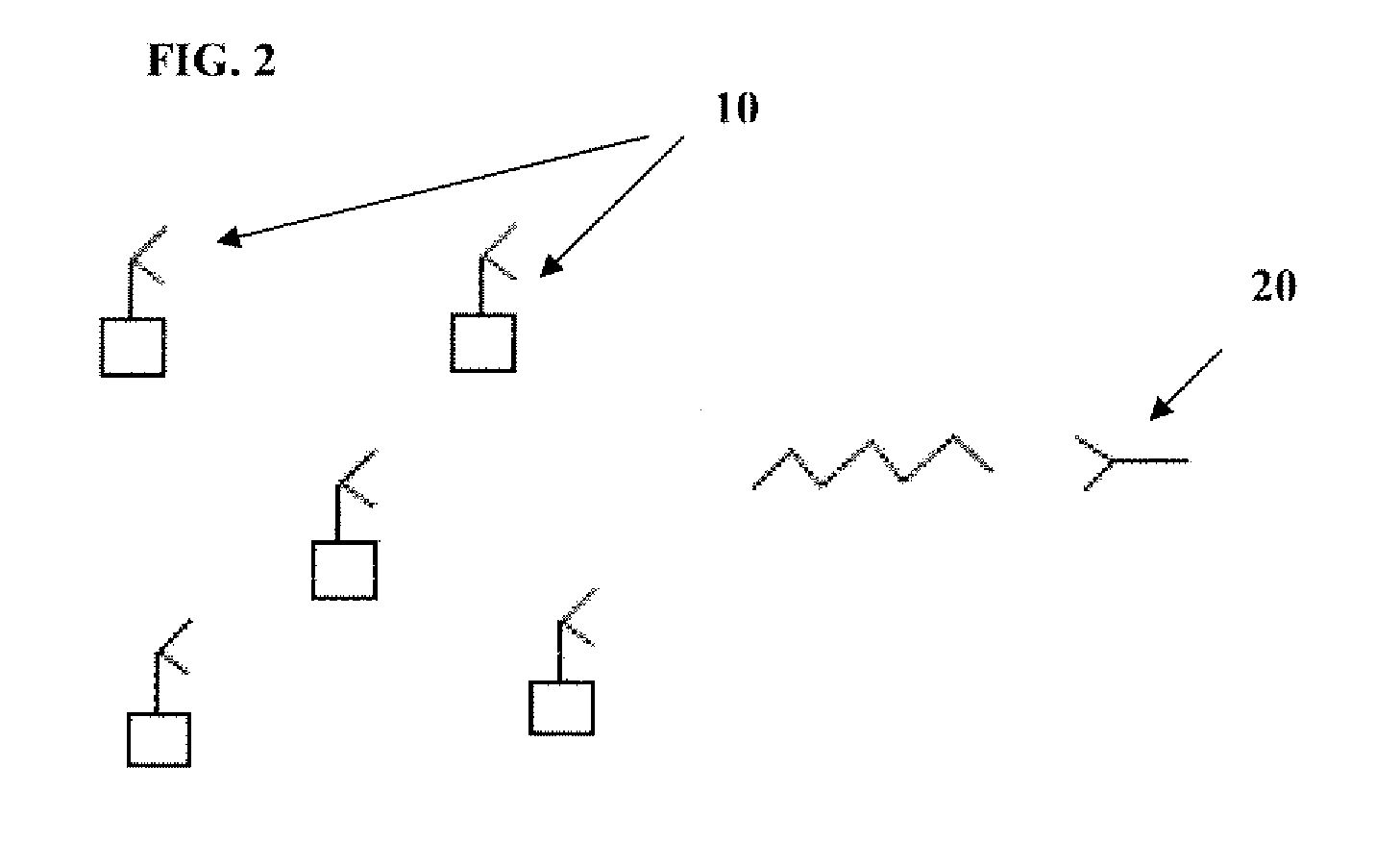Methods and systems for space-time coding for distributed cooperative communicaton
a technology of distributed cooperative communicaton and spacetime coding, applied in the direction of polarisation/directional diversity, modulation, electromagnetic wave modulation, etc., can solve the problems of time-varying multi-path fading, fading of received signals, and nodes are often constrained in hardware complexity and siz
- Summary
- Abstract
- Description
- Claims
- Application Information
AI Technical Summary
Problems solved by technology
Method used
Image
Examples
Embodiment Construction
[0032]Various concepts of digital signal processing referred to in this application are conventional in, for example, the digital communication and other arts, and thus they need not be described in detail herein. These concepts include, without limitation, combined modulation and coding, maximum-likelihood decoding, channel estimation and space-time coding. These concepts are described for instance in U.S. Pat. No. 4,457,004, issued Jun. 26, 1984 to A. Gersho et al.; U.S. Pat. No. 4,489,418, issued Dec. 18, 1984 to J. E. Mazo; U.S. Pat. No. 4,520,490, issued May 28, 1985 to L. Wei; U.S. Pat. No. 4,597,090, issued Jun. 24, 1986 to G. D. Forney, Jr.; U.S. Pat. No. 5,029,185 issued Jul. 2, 1991 to L. Wei; in A. Wittneben, “Base Station Modulation Diversity for Digital SIMULCAST,” 41.sup.st IEEE Vehicular Technology Society Conference Proceedings, pp. 848-853; U.S. Pat. No. 5,479,448 to Seshadri, V. Tarokh, N. Seshadri, and A. Calderbank, “Space-time codes for high data rate wireless c...
PUM
 Login to View More
Login to View More Abstract
Description
Claims
Application Information
 Login to View More
Login to View More - R&D
- Intellectual Property
- Life Sciences
- Materials
- Tech Scout
- Unparalleled Data Quality
- Higher Quality Content
- 60% Fewer Hallucinations
Browse by: Latest US Patents, China's latest patents, Technical Efficacy Thesaurus, Application Domain, Technology Topic, Popular Technical Reports.
© 2025 PatSnap. All rights reserved.Legal|Privacy policy|Modern Slavery Act Transparency Statement|Sitemap|About US| Contact US: help@patsnap.com



